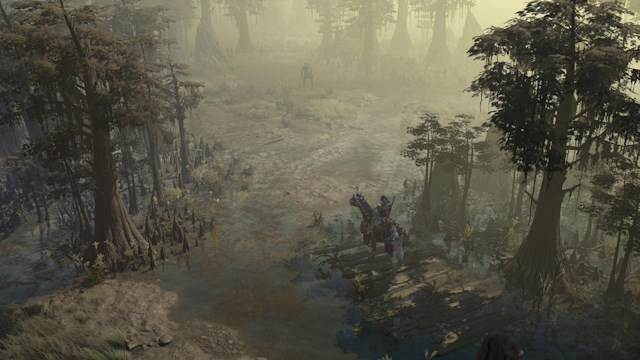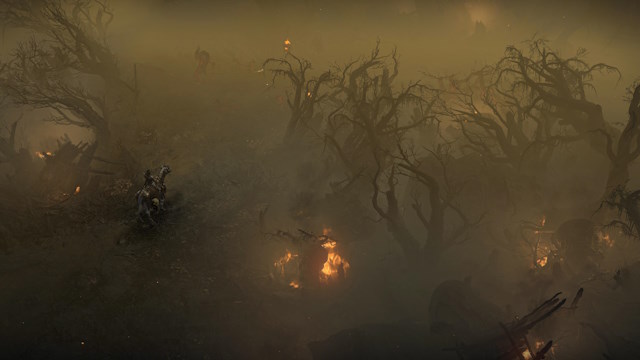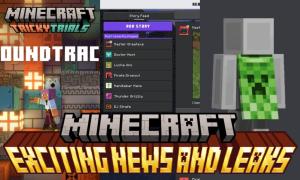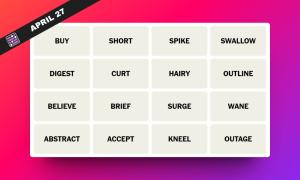Diablo 4 was possibly one of my anticipated game titles this year. Two successful beta sessions gave us a taste of what to expect from the fourth entry in the long-running series. However, I was also wary, as I have heard of the dreaded Diablo 3 launch, and the state in which modern games are currently launching does temper our expectations. Add in the fact that another game by Activision Blizzard getting its planned content canceled further made me worried, given Diablo 4’s live service nature.
Fortunately, as of writing this, those worries were for naught. Diablo 4 is a fitting addition to the series, bringing in some fun gameplay packed with a decent storyline and strong end-game content. Thanks to NVIDIA and Activision Blizzard, who got us a copy, we tried the game after launch. And after spending close to what seems like 80 hours in the game, I can finally sit down and share my thoughts about Diablo 4, which are mostly positive (with a dash of negatives).
The Mother Of Sanctuary Returns in Diablo 4

Canonically the game takes place in Sanctuary, some fifty years after Diablo 3. Sanctuary, a world inhabited by humans, constantly gets embroiled in the eternal conflict between Burning Hells and High Heavens. After a Horadrim called Elias goes rogue from the visions of the future, he summons Lilith in Diablo 4. The daughter of the prime evil Mephisto and mother of Sanctuary, she plans to empower humanity. Unfortunately, her methods make it hard to trust the lesser evil.
On the other hand, Inarius, a fallen angel and lover of Lilith, sees a prophecy. Yearning to return to High Heavens, he sets out to fulfill his prophecy of taking down his beloved. Amidst this, you, the player, play the part of annihilating Lilith. And that is how the story of Diablo 4 unfolds.
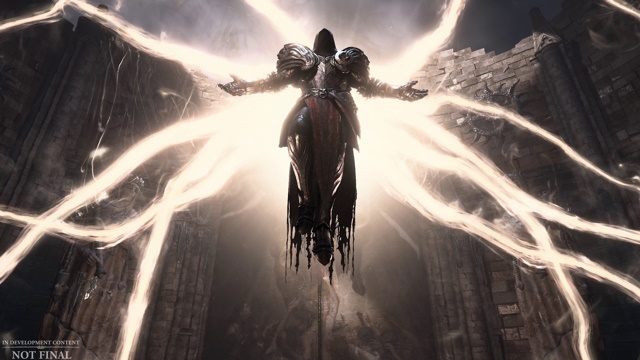
While the story sounds compelling, I expected a bit more clarity on the background of most of the characters in game. Especially a fleshed motivation for Lilith and Inarius. Unfortunately, to my dismay, the story barely scratches the surface. It boils down to Inarius acting like a manchild and Lilith becoming the most diabolical demon trying to achieve her goals; by killing the same people she sought to empower and protect.
On the flip side, Caroline Faber did a fantastic job voicing Lilith in the game. Her acting pretty much made me anticipate the arrival of the character. Speaking of which, Blizzard has struck gold with the voice-acting of characters in Diablo 4. They ensure that almost every character has clear motivations and why they behave the way they do.
By the end of it, I came to adore Donan and Lorath as well. I cannot praise the voice acting enough. Every NPC, optional quest, and main storyline conversation has proper voice lines this time, helping people that have difficulty reading through long texts.
Choose One of the Five Classes
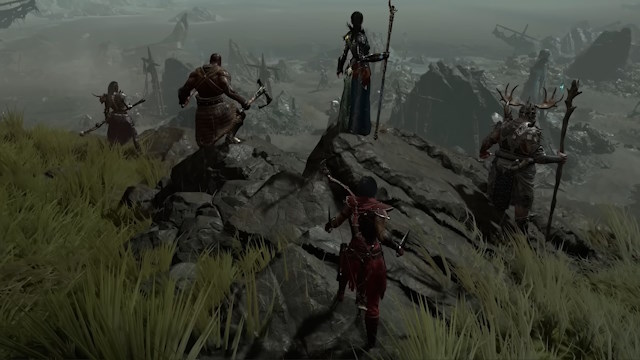
Similarly to past Diablo games, the game lets you choose between one of the five classes in Diablo 4. Each of these classes make their return from past Diablo titles and plays differently.
- Barbarian (which appears in Diablo 2 and 3) is a melee-focused character that switches their weapons based on the skills used.
- Druid (appearing in Diablo 2) can shapeshift into a werewolf and werebear. They also employ the assistance of nature and animals to attack.
- Sorcerers (which appear in Diablo 2) can utilize elemental magic to attack enemies. They can use fire, ice, and lightning to chain attacks and wipe out enemies.
- Rogue (which appears in Diablo) is the fastest class in the game. They can employ fast melee attacks against close enemies or use ranged attacks using arrows. Furthermore, Rogue utilizes traps, smoke bombs, and everything possible to become an annoyance to their enemies.
- Necromancer (which appears in Diablo 2 and 3) can revive the dead and command them to do their bidding. Thanks to their access to the Book of the Dead, they can summon skeletons, skeletal mages, and more during a fight.
Each class gets a unique skill tree that changes gameplay depending on the skills you choose as you progress through the game. This allows for a variety of builds that suits situations and playstyles. For example, Sorcerers can follow the skill tree to focus on one elemental magic or a mix of them all. Similarly, each of the characters lets players create unique builds and dole out immense damage. This brings the much-needed playstyle variety. And if you do not enjoy a particular build, change it without any worries.
Mid-game, every character also gets access to their unique skills. For example, Necromancer starts using their Book of the Dead, which allows them to summon skeleton minions. Similarly, Rogue gets access to three specializations that drastically change how the character plays. These small additions to the game further enforce the fact that you will become an immovable character, melting enemies within seconds by the point you reach the max level.
And this is the charm of Diablo 4 – this fixation on improving your character to the point that they become an immovable force. Honestly, the selection of the classes for this game has been spot on, with Blizzard knowing how to trap the players into enjoying the game in a good way.
Journey Through the Sanctuary in Diablo 4
Diablo 4 opens up the world of Sanctuary for the first time in the series. While the past Diablo games featured locations of Sanctuary split across the various acts of the game, this game ditches that in favor of one single large map of Sanctuary, divided into five regions. Each of these regions has different fauna and enemies.
The starting area, Fractured Peaks, is a snowy mountain, whereas Dry Stepps is a desert. The game has checkpoints at numerous locations, allowing for fast travel. Later on, you also get access to the horse in Diablo 4. Players can go to any of these regions at any time they want. It is advisable, however, to level up your character appropriately before you do it. And for that, there are various activities.
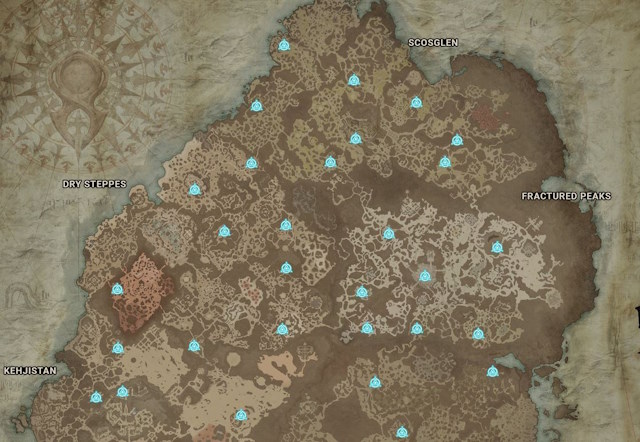
The core activity of Diablo 4 consists of the main storyline, which includes six acts, optional quests found throughout the Sanctuary, and dungeons, which offer loot and ultimates. Completing these activities contributes to XP, which progresses your level. You can then further spend the level-up point in the skill tree. If doing these does not fancy you, world events or legion events welcome you, which other players can join. These give a higher tier of loot, resources to improve your gears and weapons, and a currency called Murmuring Obols.
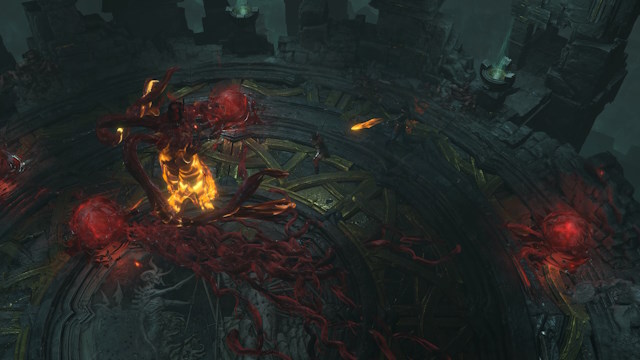
Every single of these activities is playable with a group of friends or random players, making Diablo 4 similar to some of the MMO offerings from Asia, like Lost Ark. However, make no mistake. This is still a by-the-book ARPG, where the proper allotment of gears and weapons will ensure how much damage you do.
This is essential, as doing so will ensure that you deal the appropriate damage to enemies in the game, which come in hoard by the time you reach level 25. Speaking of which, enemies are divided into three categories – standard, elite, and bosses. Depending on your build, you can either finish them off in seconds or take a while to kill them off.
Blizzard ensured players shouldn’t be deprived of content, throwing everything they could at them. And trust me when I say this, this is not scratching the surface.
Craft and Fix Your Gear with Ease
In the major towns of Sanctuary, players will find numerous vendors. These vendors help fix gears, sell unnecessary items, and even help inlay gems and aspects. The most common vendor you’ll find is the weapon and armor vendors. These people buy and sell gear and are a great place to make money. Right beside them are the blacksmiths. They help in upgrading and fixing them, along with salvaging all your items in Diablo 4. Salvage also unlocks transmog.
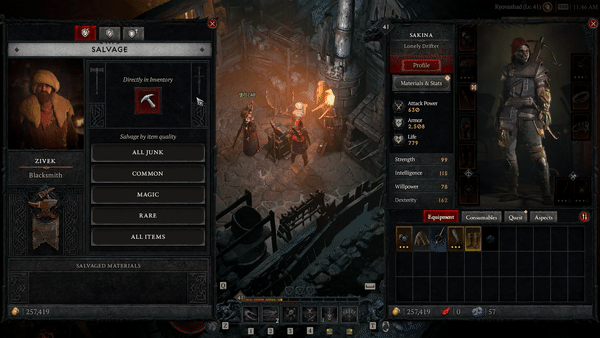
Apart from the above, you have the shaman that applies the ultimates collected from the dungeons. They also extract aspects from legendary items. Finally, there are herbalists, who upgrade your healing flask, stablemaster, who allows horse customization, and the purveyor of curiosity vendor who facilitates gambling for gear in exchange for murmuring obols.
The one thing to criticize here is that the instructions explaining these systems are inadequate. It took me some time to understand how each of these systems works. However, once you grasp it, these systems become second nature and one you’ll spend time in occasionally.
The Endgame
Once you hit level 50 with the character in Diablo 4, the endgame begins. It opens the Paragon board, which allows you to level up your character stats and put unique modifiers. Per level, you can get four total paragon points. And to gain paragon points quicker, you will need to perform some activities. There are two main endgame activities, apart from the sidequests and world events.
The first is the tree of whispers. In this, you get a cycling bounty spanning across the map of Diablo 4. Finishing these will get you legendary gear, crafting materials, currency, and more. The second is the Helltide. For a set period, certain map regions will turn into scorched red. These areas get invaded by demons, and the objective here is to slay as many enemies as you can. At the same time, certain Torture Chests appear in this region, which is opened by using Abherrent Cinders dropped from slain enemies. This is a great way to farm endgame loot.
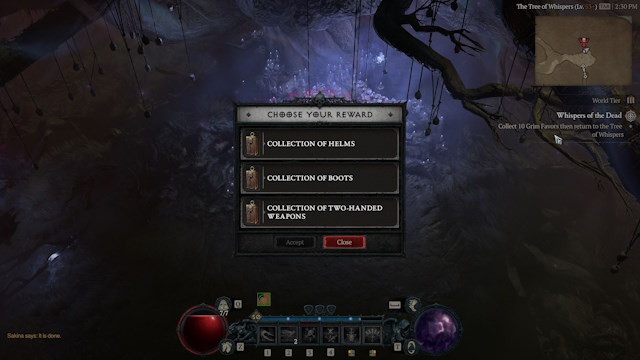
Additionally, there are nightmare dungeons, which are standard dungeons with modifiers. Nightmare Dungeons have stronger enemies and exponentially better loot. Furthermore, the bosses in these dungeons come with modifiers, giving you increased challenge. To access, you change your world tier by completing capstone dungeons. The game has two capstones, finishing which unlocks World Tier 3 and 4. These two tiers increase the enemy intensity and the frequency of legendary gear drops.
While the main game is an already brilliant experience, the endgame is the strong point of Diablo 4 and the most fun I had in this game.
Performance
Of course, performance is a thing to consider. On that front, Diablo 4 had a solid gameplay performance throughout the last couple of weeks. We tested the game on the following system:
- CPU: AMD Ryzen 5600
- GPU: NVIDIA RTX 4060Ti 8GB
- RAM: 16Gb @ 3000MHz
- Resolution: 1080p/144Hz
There is not much to talk about here. Initially, I played Diabo 4 without DLSS 3 and maxed out to see how it fares. Fortunately, I had zero hiccups. I locked in the internal frame rate to 150 frames, and the game managed that FPS, even during intense moments. With the DLSS 3 feature enabled, we didn’t see substantial performance growth when the frame rate was capped at 150. However, the frames went higher as soon as we bumped the frame limit. For the uninitiated, NVIDIA’s DLSS 3 is an image generation technology that downsamples the image and then upscales it with AI technology, retaining the visual flair in the process.
Visuals-wise, the game is gorgeous, fully embracing its dark tones. You’ll see blood and guts at numerous points, enemies getting attacked become bloody, blood splotches frequently appear on the ground, and each region has this distinct look. Whether you are playing it with DLSS 3 on or off, you will come to appreciate the visuals that the team has worked hard to nurture. Hence, if you are on any card released in the last four years, Diablo 4 will not struggle to run a single-bit.
As for boot times, the game loaded into the game within 10-15 seconds. Furthermore, the only real network issue we faced in Diablo 4 was the queue on the first day of launch. Otherwise, the network infrastructure seems to work well. Unfortunately, there is no offline mode in the game, and I would love to have one, judging how much I play this title on my Steam Deck.
Final Verdict: Should You Buy Diablo 4?
So, do I recommend you to buy diablo 4? The straightforward answer is YES. I avoid ARPGs because I don’t enjoy the grind and the min-maxing. Fortunately, Diablo 4 solves that issue by just being a good game. While the main story is just a great setup for future expansions, everything else surrounding the game is well-made and balanced. Whether it’s the five classes, the world events, the online features, and even the endgame, Diablo 4 incorporated everything they learned from the past titles and modernized it for the current audience.
With Activision Blizzard committed to supporting the game for a long-time and confirmed expansion in the works, it seems our war against the prime evils is anything but finished. The only real gripe I have with this game is its price point. Shelling out $70 for the standard edition might be fine for people who can afford it, but the asking price is too high for emerging markets. But to close it off, we can’t wait to see what the game has planned for the upcoming seasons.









